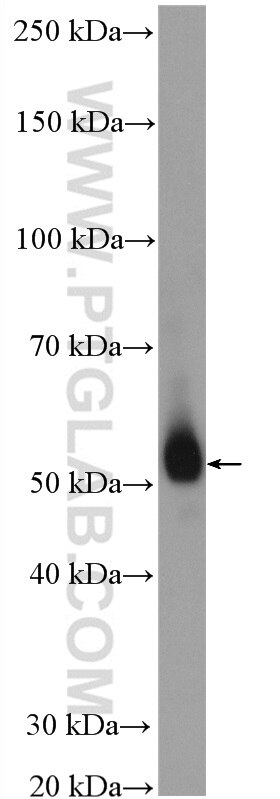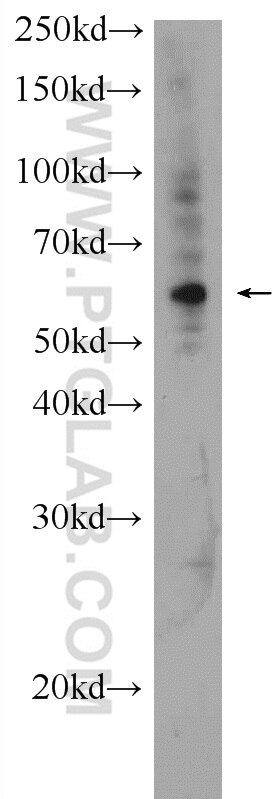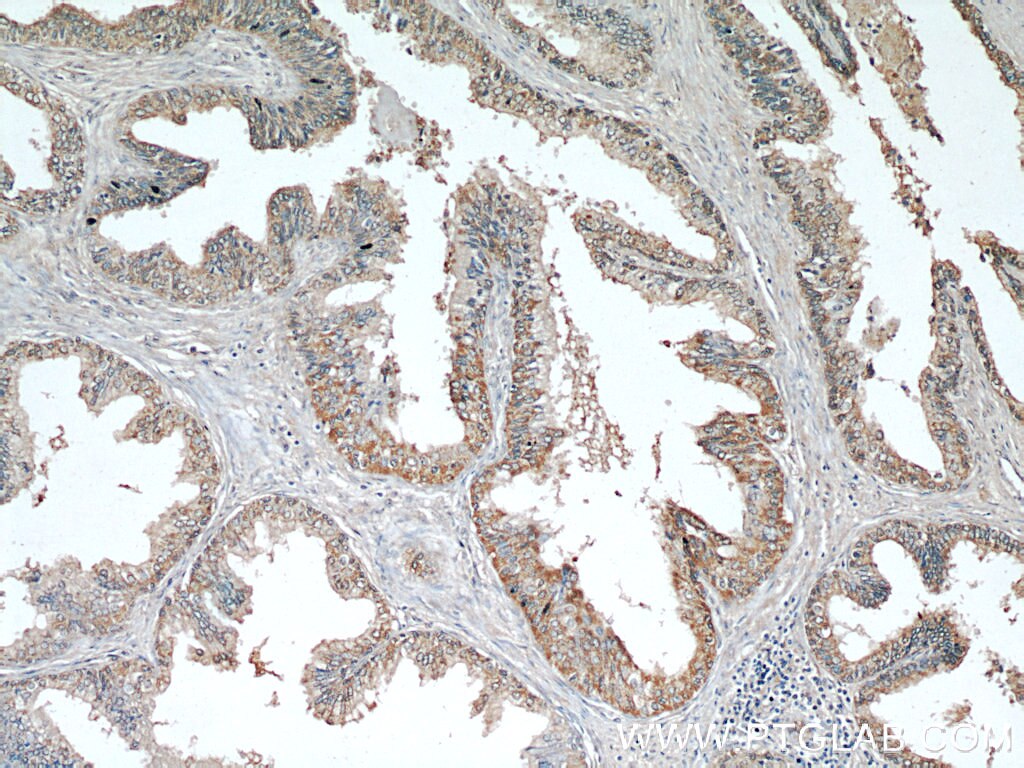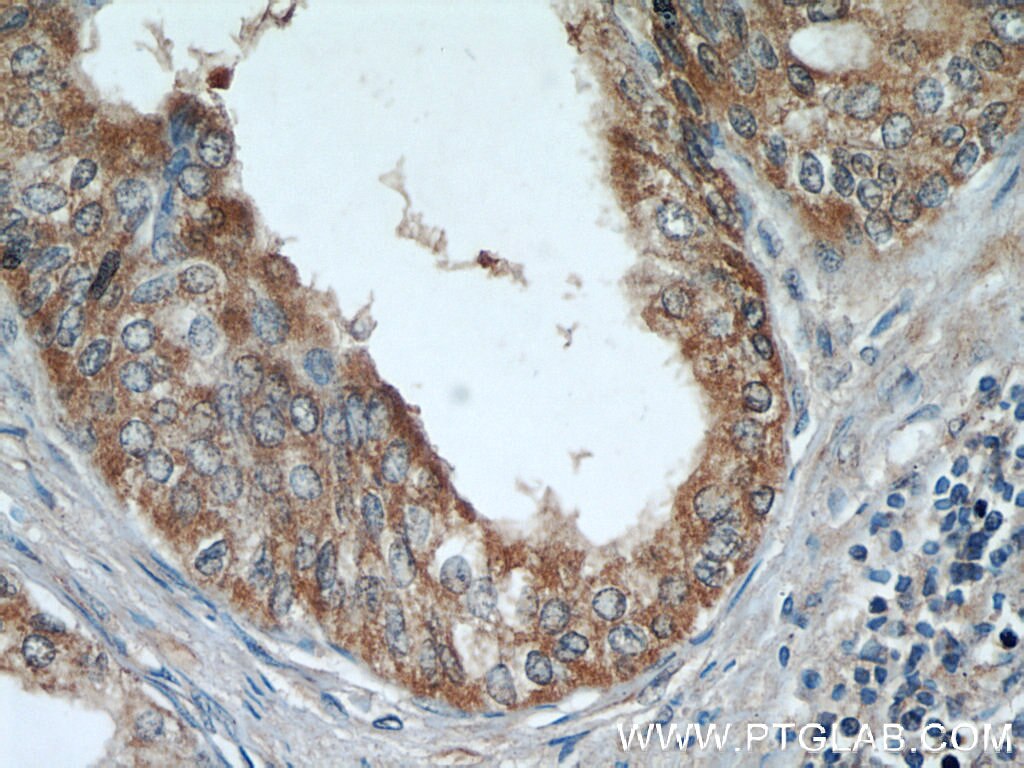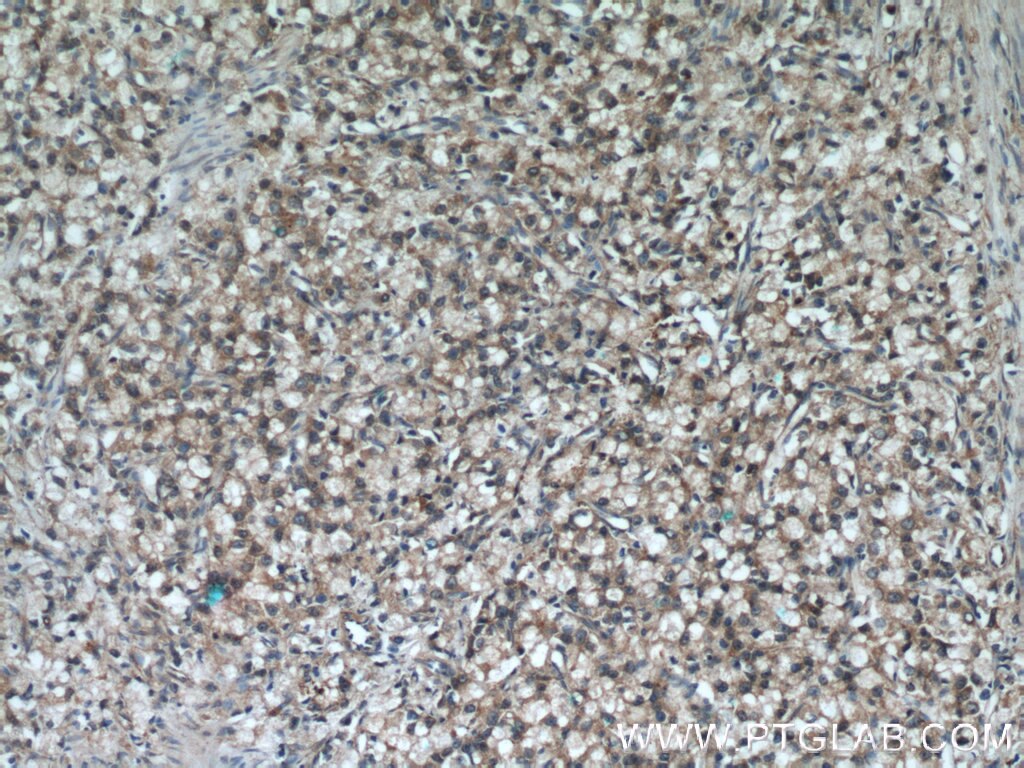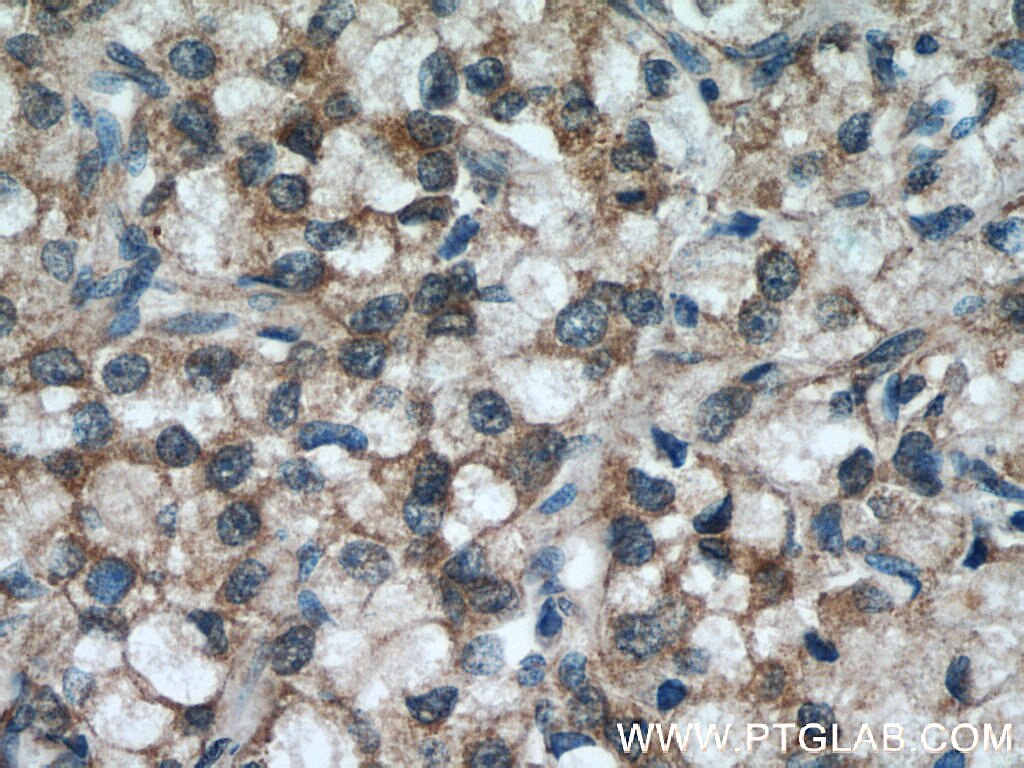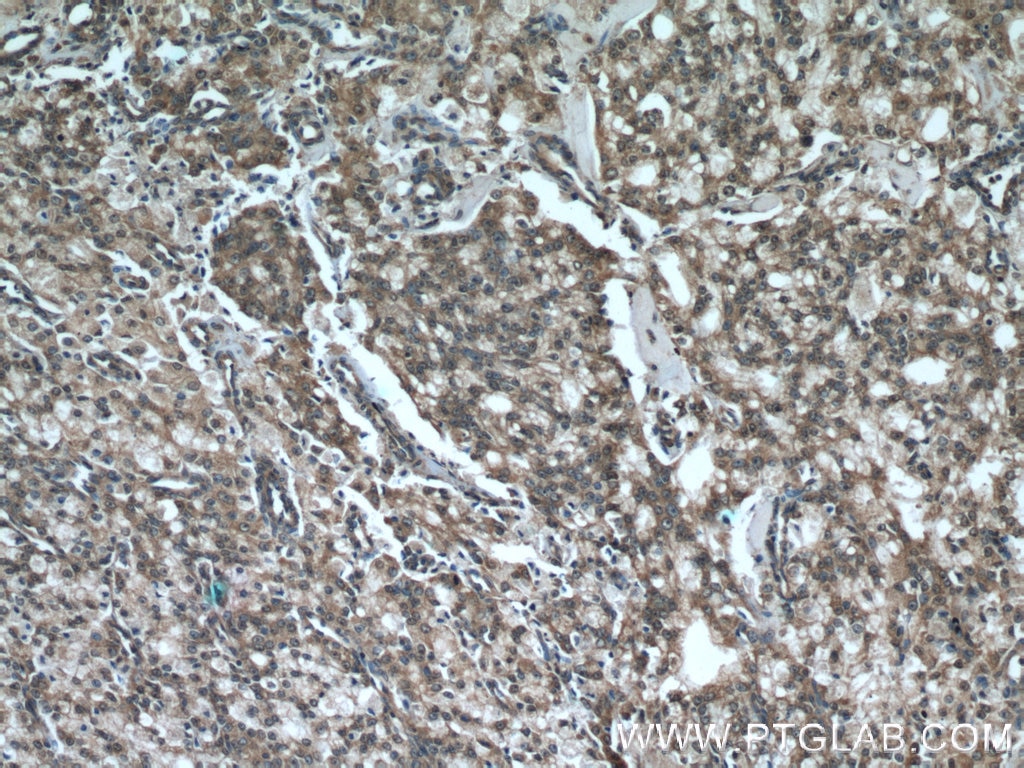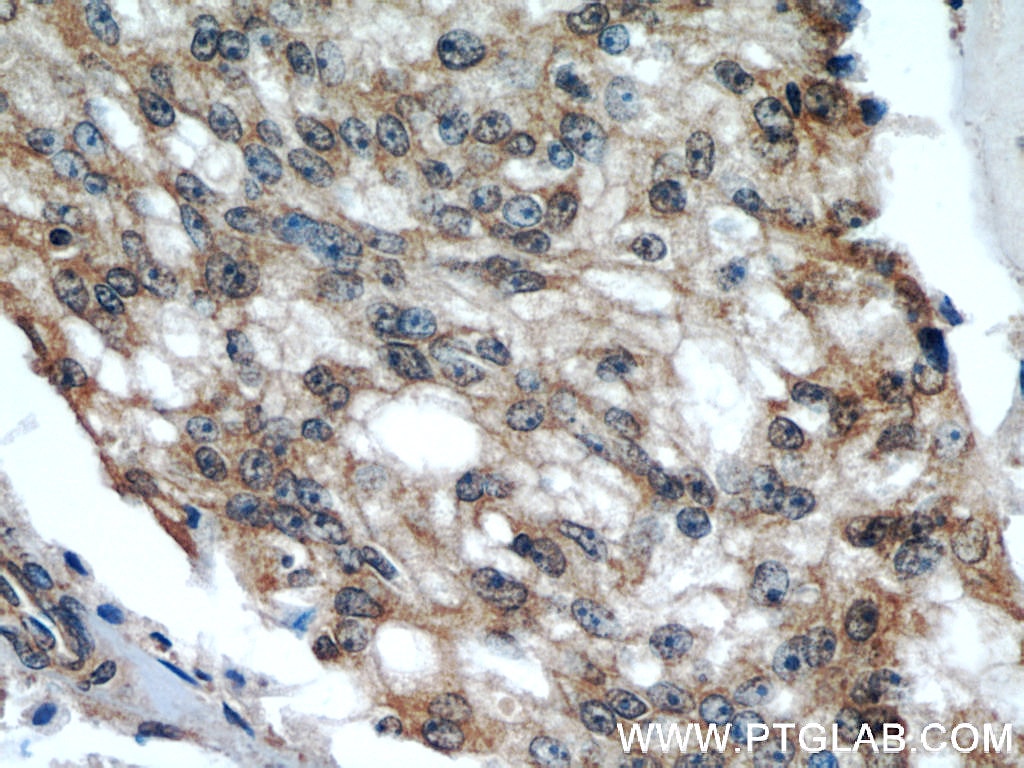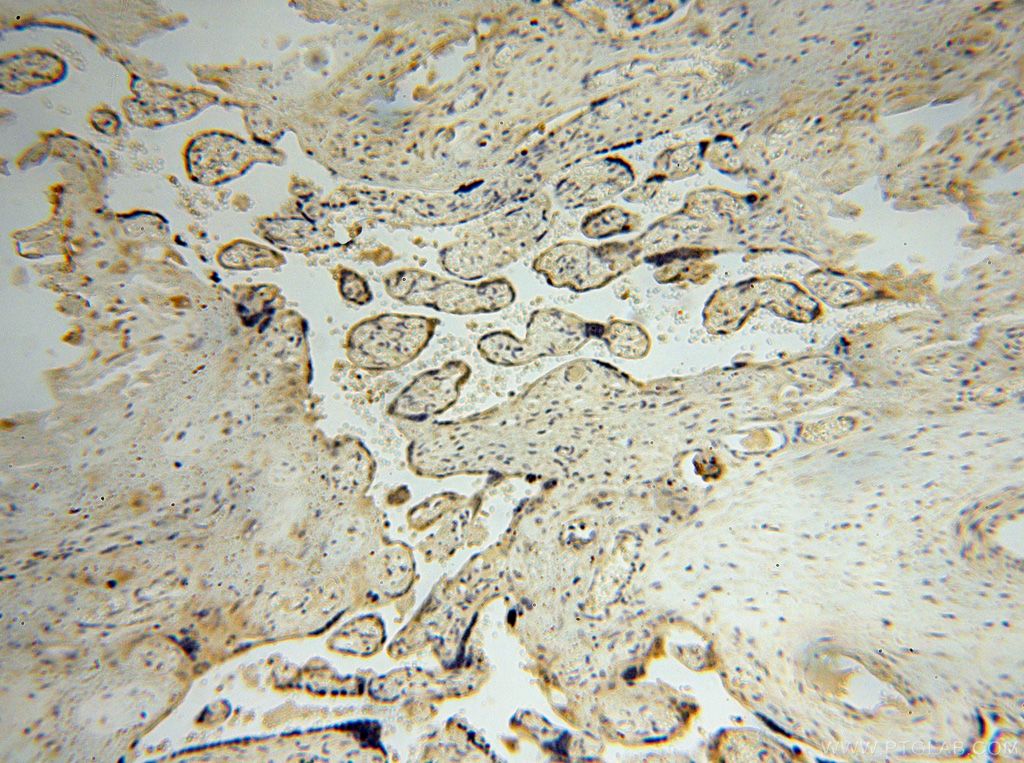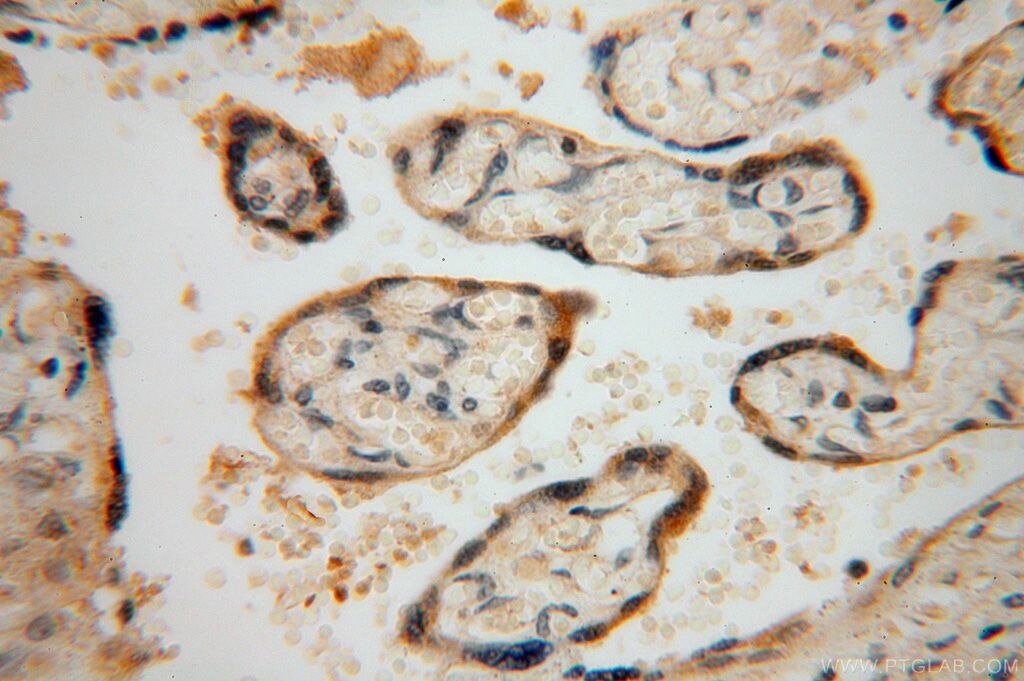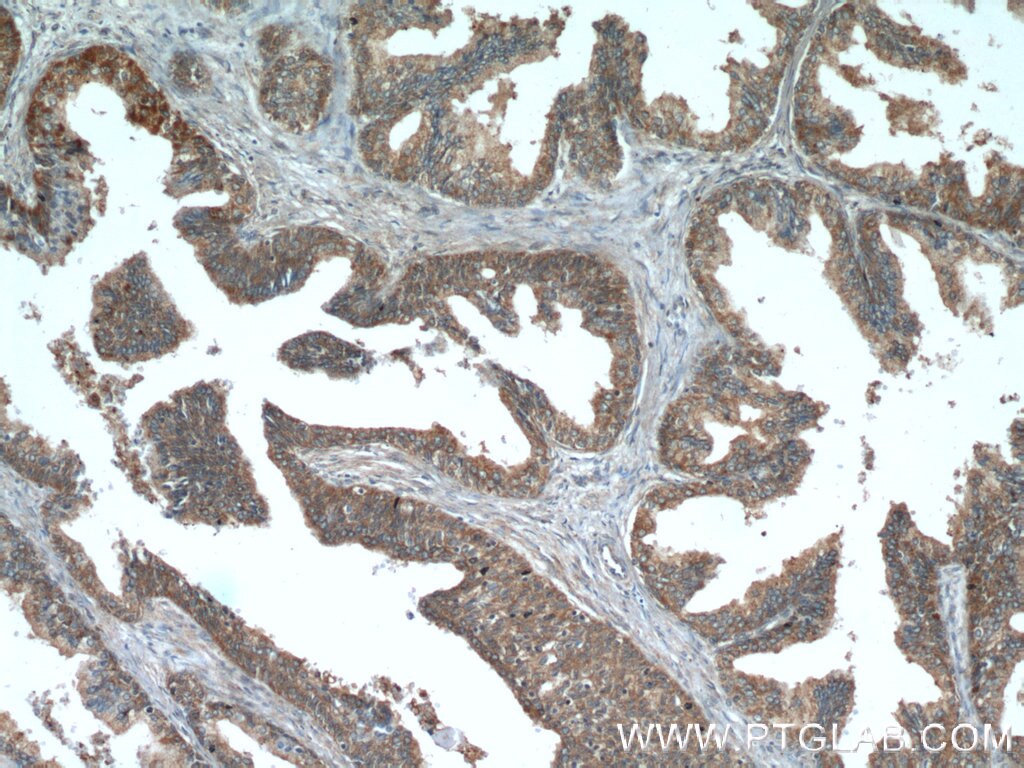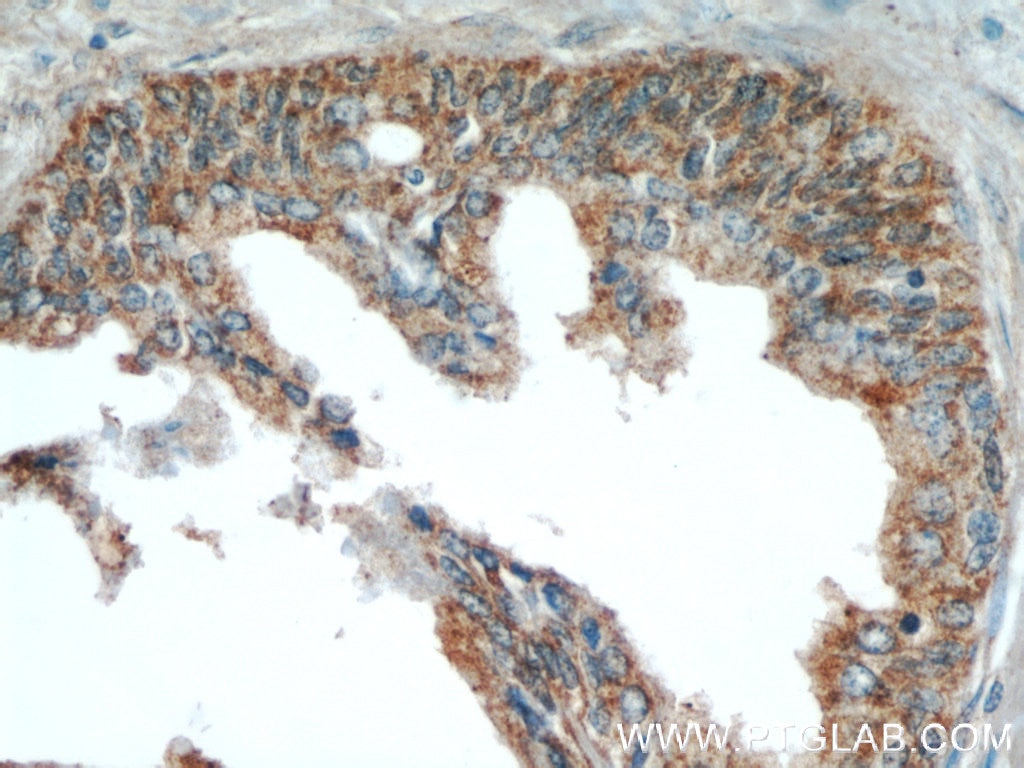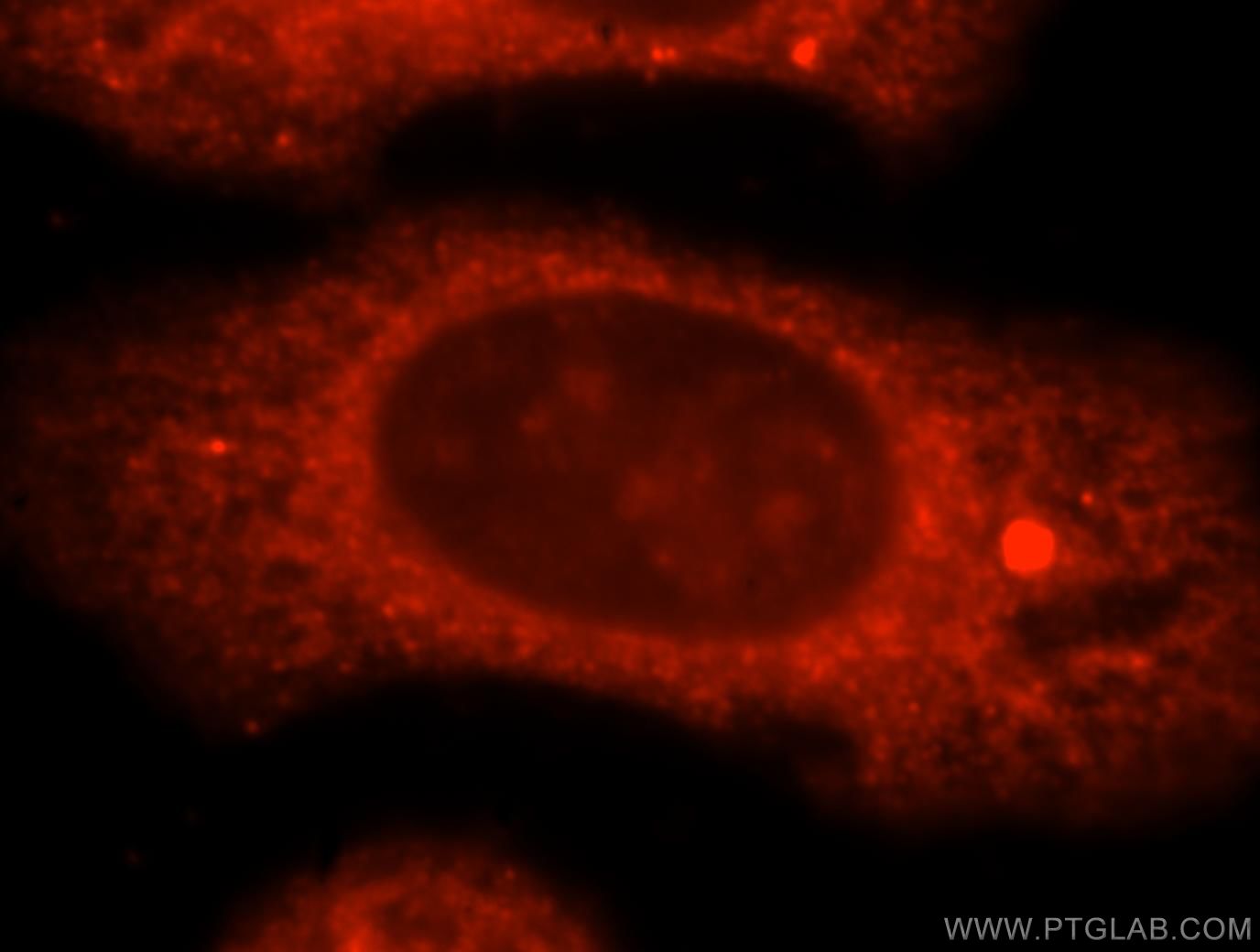- Phare
- Validé par KD/KO
Anticorps Polyclonal de lapin anti-ODC1
ODC1 Polyclonal Antibody for WB, IF, IHC, ELISA
Hôte / Isotype
Lapin / IgG
Réactivité testée
Humain, rat, souris et plus (1)
Applications
WB, IHC, IF/ICC, ELISA
Conjugaison
Non conjugué
N° de cat : 17003-1-AP
Synonymes
Galerie de données de validation
Applications testées
| Résultats positifs en WB | tissu de thymus de rat, tissu de thymus de souris |
| Résultats positifs en IHC | tissu d'hyperplasie de la prostate humain, tissu de cancer de la prostate humain, tissu placentaire humain il est suggéré de démasquer l'antigène avec un tampon de TE buffer pH 9.0; (*) À défaut, 'le démasquage de l'antigène peut être 'effectué avec un tampon citrate pH 6,0. |
| Résultats positifs en IF/ICC | cellules HepG2 |
Dilution recommandée
| Application | Dilution |
|---|---|
| Western Blot (WB) | WB : 1:200-1:1000 |
| Immunohistochimie (IHC) | IHC : 1:20-1:200 |
| Immunofluorescence (IF)/ICC | IF/ICC : 1:10-1:100 |
| It is recommended that this reagent should be titrated in each testing system to obtain optimal results. | |
| Sample-dependent, check data in validation data gallery | |
Applications publiées
| KD/KO | See 3 publications below |
| WB | See 12 publications below |
| IHC | See 4 publications below |
Informations sur le produit
17003-1-AP cible ODC1 dans les applications de WB, IHC, IF/ICC, ELISA et montre une réactivité avec des échantillons Humain, rat, souris
| Réactivité | Humain, rat, souris |
| Réactivité citée | Humain, porc, souris |
| Hôte / Isotype | Lapin / IgG |
| Clonalité | Polyclonal |
| Type | Anticorps |
| Immunogène | ODC1 Protéine recombinante Ag10699 |
| Nom complet | ornithine decarboxylase 1 |
| Masse moléculaire calculée | 461 aa, 51 kDa |
| Poids moléculaire observé | 51 kDa |
| Numéro d’acquisition GenBank | BC025296 |
| Symbole du gène | ODC1 |
| Identification du gène (NCBI) | 4953 |
| Conjugaison | Non conjugué |
| Forme | Liquide |
| Méthode de purification | Purification par affinité contre l'antigène |
| Tampon de stockage | PBS with 0.02% sodium azide and 50% glycerol |
| Conditions de stockage | Stocker à -20°C. Stable pendant un an après l'expédition. L'aliquotage n'est pas nécessaire pour le stockage à -20oC Les 20ul contiennent 0,1% de BSA. |
Informations générales
Ornithine decarboxylase (ODC) is also named as ODC1 and belongs to the Orn/Lys/Arg decarboxylase class-II family. It catalyzes the conversion of ornithine to putrescine, the first step and a major site of regulation of polyamine biosynthesis. The level of ODC is known to be controlled at several sites, namely transcription, translation, and enzyme degradation. Polyamines can stimulate the degradation of ODC as a type of negative feedback control (PMID:8486633). This protein can be phosphorylated in vivo (PMID:8798774). ODC1 can form a homodimer and only the dimer is catalytically active, as the active sites are constructed of residues from both monomers (PMID: 10623504). The molecular mass of ODC1 is 51 kDa, and the homodimer is 106 kDa.
Protocole
| Product Specific Protocols | |
|---|---|
| WB protocol for ODC1 antibody 17003-1-AP | Download protocol |
| IHC protocol for ODC1 antibody 17003-1-AP | Download protocol |
| IF protocol for ODC1 antibody 17003-1-AP | Download protocol |
| Standard Protocols | |
|---|---|
| Click here to view our Standard Protocols |
Publications
| Species | Application | Title |
|---|---|---|
NPJ Precis Oncol Integrated multiomics analysis of hepatoblastoma unravels its heterogeneity and provides novel druggable targets | ||
NPJ Precis Oncol Integrated multiomics analysis of hepatoblastoma unravels its heterogeneity and provides novel druggable targets.
| ||
Am J Physiol Cell Physiol The Regulation of Polyamine Pathway Proteins in Models of Skeletal Muscle Hypertrophy and Atrophy - a potential role for mTORC1. | ||
Life Sci Ornithine is a key mediator in hyperphosphatemia-mediated human umbilical vein endothelial cell apoptosis: Insights gained from metabolomics. | ||
Arch Pharm Res Spermidine rescues proximal tubular cells from oxidative stress and necrosis after ischemic acute kidney injury.
| ||
